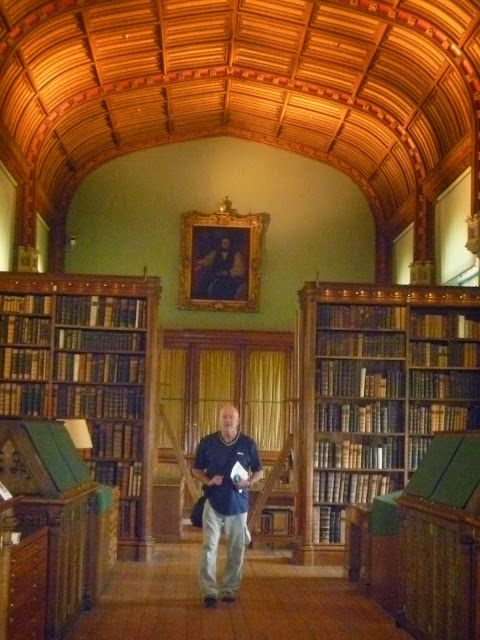We had intended to stay in the Salisbury area but found it difficult to get accommodation. So instead we decided to go to the south coast of Devon.
We drove via Salisbury as we were keen to
visit the Salisbury Cathedral. Not only is it a magnificent cathedral but it
has one of the four remaining original Magna Carta documents. Magna Carta (is Latin for
"Great Charter") and is one of the most celebrated documents in
English history. At the time it was the solution to a political crisis in
Medieval England but its importance has endured as it has become recognised as
a cornerstone of liberty influencing much of the civilized world.
 |
| Salisbury Cathedral - just magnificent. |
 |
| The Magna Carta is kept in the Charter House and no photos are allowed. This shows the interior of the Cathedral. |
The Magna Carta today:
Magna Carta contains 63 clauses written in Latin on
parchment. Only three of the original clauses in Magna Carta are still law
today. One defends the freedom and rights of the English Church, another
confirms the liberties and customs of London and other towns, but the third is
the most famous:
No free man shall be seized or imprisoned, or stripped
of his rights or possessions, or outlawed or exiled. Nor will we proceed with
force against him except by the lawful judgement of his equals or by the law of
the land. To no one will we sell, to no one deny or delay right or justice.
The Magna Carta has come to symbolise the rule of law in
England, protecting the rights of the individual. Its basic principles have
been used in the constitutions of Commonwealth and other countries worldwide.In August 2009 the worldwide significance of Magna Carta 1215 was recognised as it was inscribed in the UNESCO Memory of the World register. The register was started in 1992 to protect and promote the world’s documentary heritage through preservation and access.
Two copies of the Magna Carta are kept in the British
Library, one at the Lincoln Cathedral and one at Salisbury Cathedral.
 |
| The Avon River near the Cathedral. |
Salisbury is a beautiful city located on the Avon River.

















































